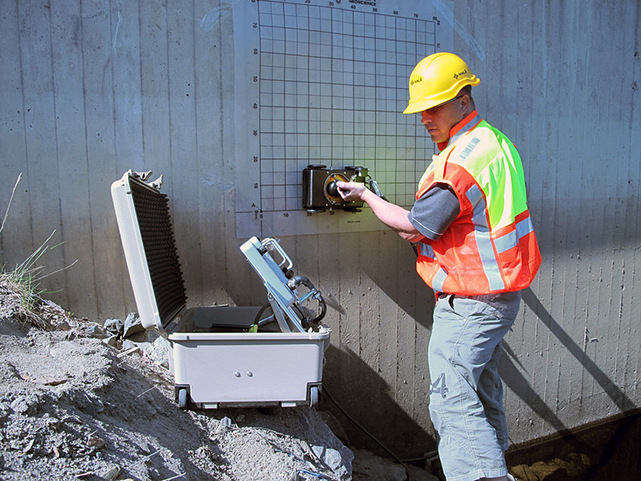Past the Surface: Leveraging Advanced Concrete Scanning Techniques for Unmatched Accuracy and Insight
Advanced concrete scanning methods have actually emerged as vital tools in this quest, providing a glimpse below the surface to reveal a globe of important understandings. By utilizing cutting-edge innovations, specialists can uncover anomalies, assess the condition of concrete frameworks, and make notified choices that form the training course of tasks.
Importance of Advanced Concrete Scanning
The relevance of making use of innovative concrete scanning strategies depends on the unrivaled accuracy they supply for discovering sub-surface anomalies and making sure architectural honesty. By employing cutting-edge technologies such as ground-penetrating radar (GPR), electromagnetic induction, and progressed finder imaging, construction specialists can dive below the surface of concrete frameworks with a level of accuracy that far goes beyond conventional examination approaches. Concrete Scanning. These techniques enable the recognition of concealed hazards like rebar corrosion, gaps, channels, or post-tension cables that might compromise the stability and safety of a framework over time
Furthermore, advanced concrete scanning supplies important understandings right into the overall condition of a concrete element without the need for invasive steps, reducing the risk of triggering damages throughout the analysis procedure. The capacity to determine the specific place and deepness of prospective concerns permits for targeted repairs and maintenance, inevitably prolonging the life expectancy of the framework and enhancing its performance. Essentially, the value of innovative concrete scanning can not be overstated in the realm of building and framework upkeep, where precision and integrity are paramount.
Sorts Of Cutting-Edge Technologies

Anomalies and Problem Detection

In enhancement to GPR, concrete scanning techniques like thermography and impact-echo testing are also efficient in discovering problems and anomalies. By leveraging these sophisticated strategies, experts can proactively deal with architectural problems, making sure the durability and security of concrete structures.
Assessing Concrete Condition
How can engineers properly evaluate the problem of concrete structures to ensure their longevity and safety? Various innovative concrete scanning methods are used for this objective. Ground-penetrating radar (GPR) is commonly made use of to examine the interior structure of concrete, identifying spaces, cracks, and other anomalies that may compromise its stamina.
Incorporating non-destructive testing straight from the source techniques with visual inspections allows for a thorough analysis of concrete condition, allowing designers to identify potential issues early on and execute timely upkeep or fixings. By leveraging these innovative strategies, designers can make certain the long-lasting longevity and security of concrete frameworks.
Enhancing Decision-Making Processes
In the realm of facilities monitoring, enhancing decision-making procedures is important for making certain the efficient upkeep and durability of concrete structures. Boosted decision-making procedures in concrete management involve making use of advanced scanning strategies to gather in-depth data on the problem of structures. By leveraging innovations such as ground-penetrating radar and 3D imaging, stakeholders can make informed decisions relating to reinforcement, repair, or replacement methods.
These progressed scanning strategies supply very useful understandings into the interior make-up of concrete, determining possible problems such as spaces, fractures, or corrosion that may not show up on the surface area. This level of comprehensive details permits positive maintenance planning, decreasing the risk of structural failures and enhancing the general life expectancy of concrete structures.
Additionally, by including electronic paperwork and evaluation tools right into the decision-making procedure, stakeholders can track the development of concrete conditions with time, allowing predictive maintenance approaches and maximizing source allotment. Eventually, the integration of advanced concrete scanning strategies improves decision-making procedures by providing unparalleled accuracy, understanding, and performance in infrastructure administration.
Conclusion
To conclude, progressed concrete scanning techniques use unparalleled precision and understanding in detecting anomalies, issues, and evaluating the problem of concrete structures. By leveraging sophisticated technologies, decision-making procedures can be improved, leading to even more effective and enlightened services for maintaining and repairing concrete facilities. These techniques play a crucial duty in guaranteeing the safety and long life of concrete structures, making them a crucial go device in the field of construction and engineering.
Moreover, advanced concrete scanning gives invaluable insights into the general condition of a concrete component without the requirement for intrusive actions, decreasing the threat of read this triggering damages throughout the assessment process - Concrete Scanning. Another ingenious technology is 3D X-ray scanning, which provides comprehensive images of the internal framework of concrete, using useful info without the need for harmful testing. In Addition, Concrete Cover Meters are utilized to gauge the density of concrete cover over reinforcement bars properly. Boosted decision-making processes in concrete management entail using innovative scanning methods to collect comprehensive information on the condition of structures.In final thought, advanced concrete scanning techniques provide unrivaled precision and insight in spotting anomalies, flaws, and analyzing the condition of concrete structures
Comments on “Advanced Concrete Scanning Techniques: Guaranteeing Architectural Stability”